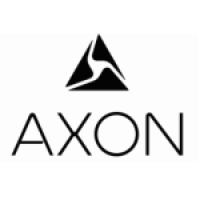At IACP 2015, TASER announced its entry into the in-car video market with a new product called Axon Fleet. TASER’s move into the market is aggressive and potentially very disruptive — the company aims to put two-way cameras in squad cars for less than $500 per unit.
Further, Fleet cameras are connected to the cloud, so that the functionality of the devices can be upgraded regularly — meaning that the company can continue to add new features and capabilities requiring no action from the department.
“Axon Fleet incorporates Axon Signal technology to automatically activate during critical situations in addition to Wi-Fi connectivity for increased ease-of-use with Evidence.com,” reads the company press release issued at IACP. “The new offering also boasts a wide-angle lens and HD video, flexible design that allows for quick and straightforward camera swaps, a rear-facing camera, and a pre-event buffer for up to two minutes.”
According to TASER, Axon Fleet’s low-light video in HD, wireless activation via connection to the light bar and other sensor activation, WiFi upload to Evidence.com, and security practices all go above and beyond CJIS requirements to keep law enforcement’s most sensitive data safe.
Burning The Ships (Again)
The aggressive pricing — as much as 90 percent less than some of the incumbent in-car systems — is not unusual for TASER. Two years ago, the company dropped its price on body worn cameras to a point where there was literally no profit in the cameras.
At the time, TASER CEO Rick Smith told Police1, “This is a burn-the-ships strategy. We’re going to drive mass adoption so quickly that we’re going to take price off the table. That in turn will drive volume, which lowers our own cost, and we’re going to pass that savings on to the customer.”
The play was successful. The company was able to migrate a lot of previously reluctant departments over to on-officer cameras, and to TASER’s Evicence.com digital evidence management storage and sharing system.
“What that did was really accelerated the market. Basically that’s a play you’re going to see from us again and again, where we take more risk than our customers can, and by taking that risk off the table for them, it makes it a no-brainer,” Smith said.
We saw the same play from TASER only two days ago, when the company announced its new Axon Body 2 camera for $399 with unlimited HD storage included in the unlimited pricing tier for $79 per month. Smith said that while such pricing concepts may temporarily cut into the company’s present-day bottom line, they are focused on the upside in the future.
“We are one hundred percent focused on building out the first cross-law enforcement platform, and as such we basically have approval from our board of directors to do what it takes to make this convenient and just such a compelling win for the customer,” Smith said.
Back To The Future (Again)
The products TASER has been building in the video space in particular are built for the future. The in-car system an agency buys today will be able to evolve as new technologies and software improvements are imagined in time.
“What we’re doing with AXON Fleet, there are two elements,” Smith told Police1. “One is that it’s a super-disruptive price, and two, we’re connecting the cloud to your car. The reason that we can use this very inexpensive piece of hardware and be able to provide similar capability is that it’s built to be connected to the cloud back end.
This means, not only do get the capabilities that hardware has today, but because we’re connected to infinite computing power on the back end, we’ll be able to add in the future things like automatic license plate reading and other sorts of image analysis — things that aren’t even possible today become possible when it’s connected to the cloud.”
Smith continued, “There are certain feature in both body and the in-car system that won’t be available at launch from a software perspective, but the great news for our customers is that we have a roadmap for the next several years that every 30 days they’re going to be getting new capabilities and new features that will make the hardware more capable, make the analytics more capable. If you think of the camera as just the edge of a very powerful cloud platform, we’re now bringing the cloud into the car at a very low cost that will be able to give you all the same capabilities plus things that very complex in-car systems could never really do.”
Smith said that one might recall how people’s consumption of music changed after the iPod entered the music space.
“People had these big expensive home stereo systems with lots of components and lots of complexity with wires running all over the place. If you wanted to make a playlist you had to put discs in and out and burn it to a cassette tape — remember those days? So that whole business got disrupted because along came this little piece of hardware connected to this massive infrastructure that allowed people organize playlists and put a thousand songs in their pocket, and do it without all the cost and complexity. That’s when really disruptive things happen, is when you create new capabilities and also go to a price that’s an order of magnitude less than what people are used to,” Smith said.















